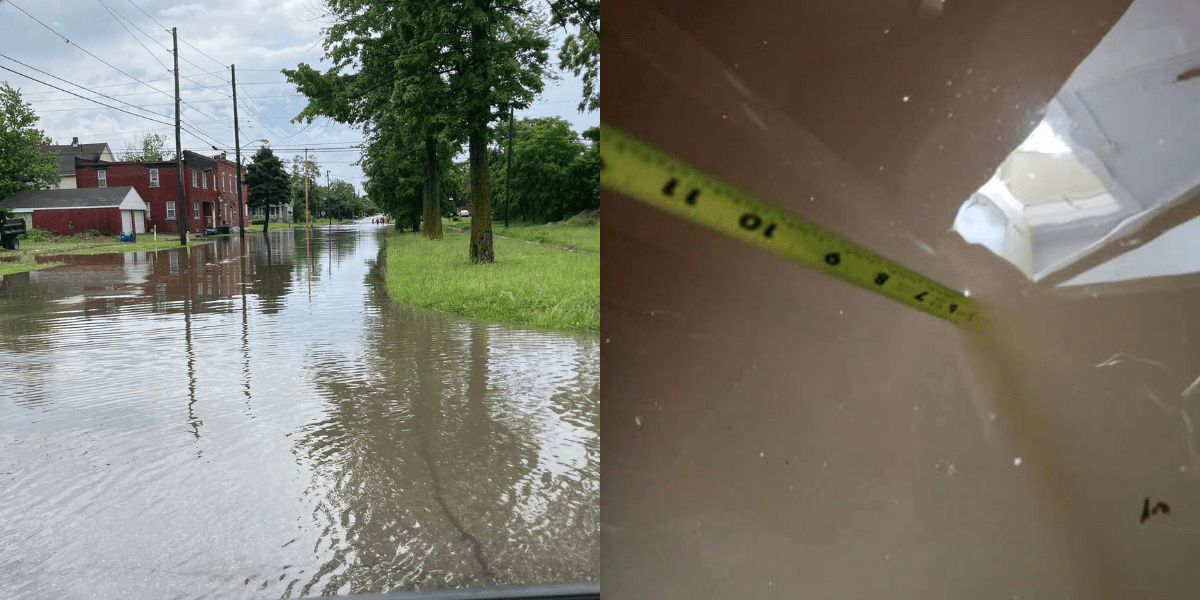Lorain, Ohio — June 18, 2025
Following a fast-moving storm on June 17, residents across South Lorain reported significant street flooding and property damage, renewing frustration over long-standing infrastructure issues and limited city response. From Tower Boulevard to East 30th Street, water overtook roads and seeped into homes, reviving memories of past floods and amplifying calls for action.

Councilman Angel Arroyo Jr. visited affected areas Tuesday evening and confirmed that city street sweepers and sewer crews would begin work early Wednesday morning. He also said the administration is reviewing previous sewer upgrades in light of ongoing complaints. In a public statement, Arroyo said the storm “was not a once-in-a-century” event and added that “our homes, businesses, and vehicles shouldn’t be damaged by flooding every summer.”
Many residents expressed appreciation for Arroyo’s visible response but questioned why the problem remains unresolved after years of investments in South Lorain’s water and sewer systems. Several posted firsthand accounts and photos showing flooded intersections, submerged yards, and extensive basement damage. Sixth Ward candidate Aaron C. Knapp, responding to a community thread, remarked, “They didn’t fix it—the rain just stopped.” Another resident added, “We’ve been dealing with this for over a decade. Nothing changes.”
Insurance Confusion and Costly Losses
In addition to structural damage, many residents shared frustrations with insurance coverage. A recurring issue was confusion between standard homeowners insurance, sewer backup coverage, and FEMA-issued flood insurance. Several people noted that even with backup policies, reimbursements often fall short of covering losses.
One commenter described having four feet of sewage in the basement last year, resulting in the loss of their furnace, hot water tank, washer, and dryer. Others recalled their claims from the August 2023 flood, where costs ran into the tens of thousands and families were forced to start over. For many, the cleanup costs were only partially covered—if at all.
Growing Political Pressure
Candidate Aaron C. Knapp (6th Ward) responded to the flooding by proposing a sump pump reimbursement program, inspired by similar efforts in cities like Detroit and Boone, Iowa. The idea is aimed at giving residents an accessible, preventive option to reduce basement backups and storm-related damage.

Knapp clarified that this is just one part of a broader conversation and welcomed additional ideas from the community, including infrastructure assessments and engineering reviews. “We need to start somewhere,” he wrote. “This is about giving people tools and showing we’re serious about protecting their homes.”
While some residents emphasized that long-term solutions will require larger-scale infrastructure improvements, Knapp framed his proposal as a practical first step toward addressing recurring storm impacts.
Community Calls for Accountability
Online conversations revealed deep frustration with what many see as the city’s reactive posture toward stormwater issues. Several residents called for a full inspection of Lorain’s storm and sanitary sewer systems and questioned why major streets continue to flood after years of reported problems.
Some urged neighbors to organize, attend city council meetings, and demand answers. One resident commented that if people don’t hold the city accountable together, “this will just keep happening.”
Others expressed resignation, noting that the city often classifies storm flooding as an “act of nature,” shifting responsibility back to homeowners. For now, South Lorain residents are left to clean up the damage—again—and wait to see whether this storm finally prompts lasting change.
